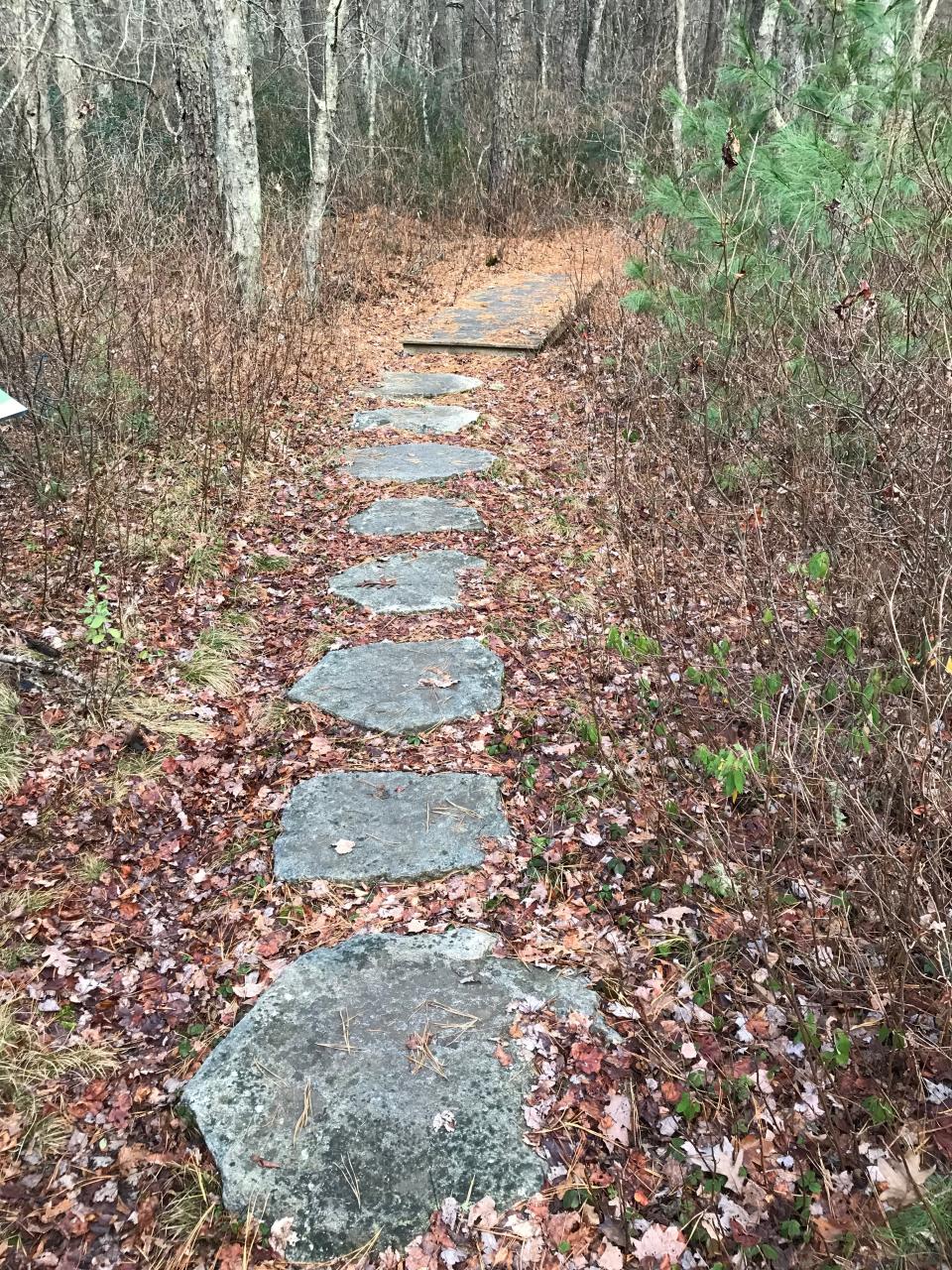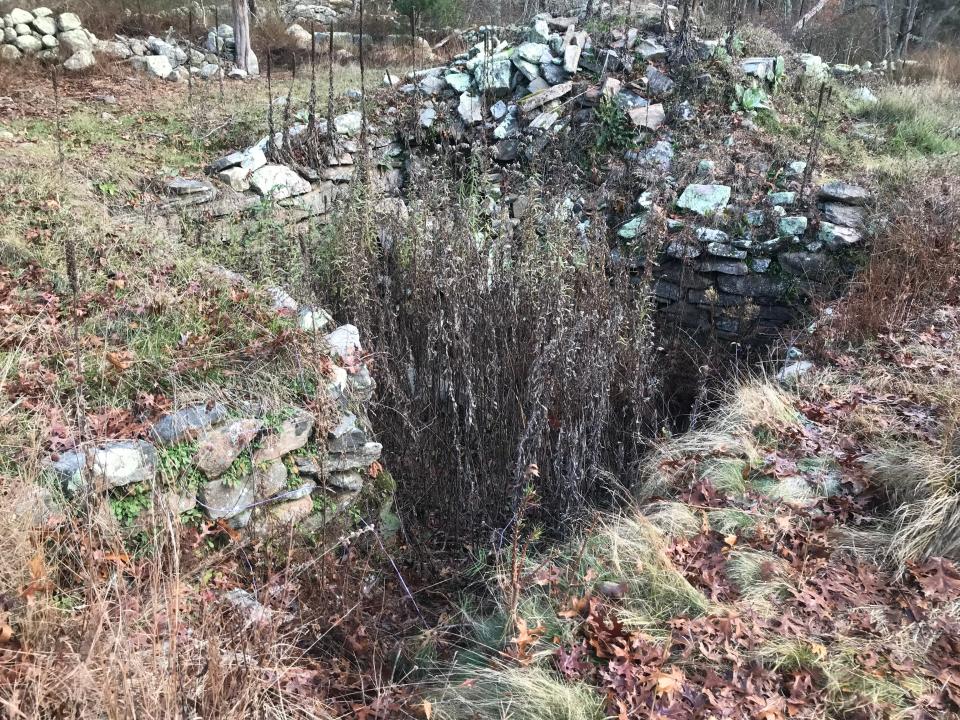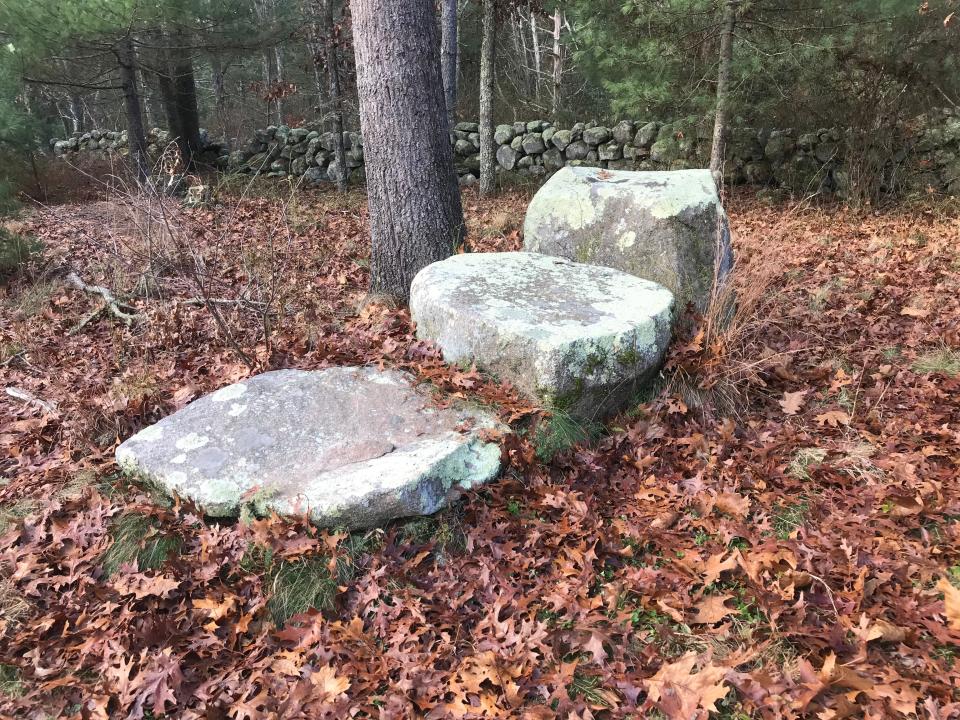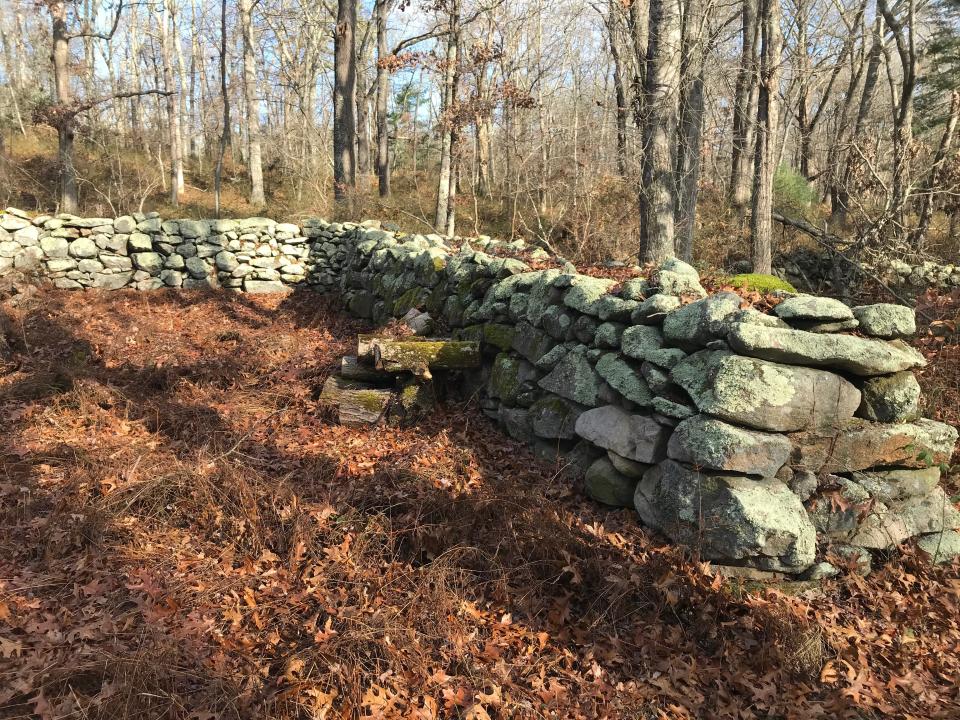Want a great place for an educational family hike? Try Browning Woods Farm in S. Kingstown
SOUTH KINGSTOWN — Ten generations of the Browning family owned, farmed and lived for centuries on the wooded hillsides here on the western edge of town. They had a good life, but a hard one.
They raised hogs, cattle, sheep and geese for markets in Providence and Newport and ran a store that served as a central marketplace for farmers on the coast to sell hay, seaweed and other products.
In 1999, one of the family’s descendants, Harold Browning Jr., sold 165 acres of the property to the South Kingstown Land Trust, which later acquired land from the Kenney family and the Animal Rescue League to create the 257-acre Browning Woods Farm.
Why you should visit
The public preserve and other adjacent protected land create a corridor of 400 acres of natural woodlands from Shannock Road to Worden’s Pond Road.
Today, the old farm paths at Browning Woods are well-marked trails that are perfect for family walks. It’s a great opportunity to identify trees, look for wildlife, get some exercise and spend time outdoors.
Hikers also can explore the historic remains of the farm and be reminded that early settlers in the 1700s cleared about three quarters of Rhode Island’s trees for agriculture. Browning Woods gives us a look back into how most Rhode Islanders once lived and worked.
Walking RI:See rugged coastline and 100-year-old ruins at Narragansett's Black Point

Landscape features to explore: A pine barren and an intermittent stream
Setting out from a trailhead off Shannock Road, I stopped at an information kiosk and learned that the area was part of the original Pettaquamscutt Purchase in January 1657, when three Narragansett sachems, Quassaquanch, Kachanaquant, and Quequaquenuet, sold the land for 16 pounds and other considerations to a partnership of five Colonial settlers. Part of that land later became South Kingstown.
The blue-blazed trail started out under red maples and white oak trees and ran along a footpath laid with a string of fieldstones to a wooden bridge over an intermittent stream. The area is sometimes swampy with running water and covered with mosses and marsh ferns, but it was bone-dry when I recently crossed. In wetter seasons, walkers can look for a variety of birds and small creatures, including salamanders, Eastern box turtles and water insects.
As I walked, the terrain, left by the retreating glaciers, changed to sandy outwash soil that was not good for farming and is part of what’s called a pine barren, where pitch pines, huckleberries and scrub oaks grow. One unusual feature of the pine barrens is that while the pitch pines have a thick bark that can withstand wildfires, flames can trigger the release of seeds from their cones. The seeds reach the burned-off underbrush and sprout, creating new growth and a new forest. Whip-poor-wills return to the area to breed each spring.
After studying the landscape, I continued to a fork in the trail. I went right and walked about a third of a mile before reaching an extensive complex of stone walls, cellar holes and ruins that marked the old Browning Homestead, which was probably built in the early 1700s.
Walking RI:Stroll through industrial history in Slatersville, America's first planned mill village

Browning Farm in its heyday had a cheese house, smokehouse, orchards and cider mill
The first documented history records that Samuel Browning sold the site to his father, William, in 1718. Samuel’s mother was the daughter of Samuel Wilbur, one of the signatories of the Pettaquamscutt Purchase.
Later, Christopher Browning (1758-1840) and his wife, Martha Cross, raised four boys and four girls on the land and probably lived in the farmhouse.
At the center of the homestead complex, I found a cellar hole with six stone steps leading down to a stone-lined foundation of an old farmhouse. The clapboard-sided house, built of white oak with a gambrel roof, was erected by Samuel Browning and was surrounded by gardens. The outbuildings on the property, connected with stone walkways, included a cheese house and a smokehouse.
More:These 10 Rhode Island trails should be on your bucket list

The site also included a spring, surrounded by mint, where water was drawn for use in the house. A barn and several sheds were northwest of the homestead complex.
The house burned to the ground in 1900, and a large pile of stones next to the foundation may have been a chimney that tumbled down. An old stone doorstep near the front door is still visible.
Most of the old structures are now rubble, buried or overgrown with brambles and bushes. I noticed that tupelo, black oak, shagbark hickory and Eastern red cedar trees had grown up among the remains.
I explored the hillside and found several long lines of stone walls, many running perpendicular to each other, that may have been animal pens. The wooden gates, though, have deteriorated and disappeared. The farm included four acres of orchards, mostly apple, with a cherry tree, and the family ran a cider mill.
One curiosity near the house is a set of three flat boulders, arranged as steps, to serve as a mounting platform for horses and carriages.
Walking RI:Take a refreshing winter hike by a peaceful stream at Tucker Woods Preserve in Charlestown

Brownings' store sold goods from local farmers, as well as Boston and Newport
The Brownings once ran a well-known store on the property. I couldn’t find exactly where it was located, but I read later that it was stocked with supplies from Boston and Newport. Corn grown on the farm was sold at the store, and other local farmers brought their products there for sale. Oak bark from the farm was sold to a local tannery, and hardwoods were made into charcoal.
After spending quite a bit of time at the site, I continued north on the blue-blazed trail, which ran through a second-growth forest that may have once been cleared for pastures. There were small piles of stones that may have been tilled from the land.
I crossed several wooden bridges over bogs where cranberries once grew.
Near the northwestern tip of the property, there’s a historic cemetery just off the trail to the west and a 4-foot-high, double stone walled foundation that was probably part of the farm.
Walking RI:Find peace on a hike at Cumberland preserve once owned by Sisters of Mercy

I followed the trail as it turned south through holly trees and passed another overgrown and collapsing cellar hole just off the trail. I measured the hole as about 21 feet by 15 feet and 6 feet deep.
The trail then followed a long, gradual slope downhill on a wide, grassy farm road that turned into a footpath and eventually reached the fork I had passed earlier. I turned right and headed back to where I'd started.
In all, I walked 2.8 miles over two hours.
Browning Woods is a good walk for people of all ages. Besides the history, there are signs that identify trees and explain the pine barren and the intermittent stream. That allows walkers to take breaks to learn about the history, wildlife and ecology of the area while getting some fresh air and plenty of exercise.
It all makes for a nice family walk.
Walking RI:What's so special about 'Quonnie' Beach? Discover its beauty in the offseason
Trail Tip
Browning Woods is open from dawn to dusk.
Hunting, fires, camping, wheeled vehicles and alcoholic beverages are not allowed on the property, according to the South Kingstown Land Trust, the nonprofit organization that manages the preserve.
John Kostrzewa, a former assistant managing editor/business at The Providence Journal, welcomes email at johnekostrzewa@gmail.com.
This article originally appeared on The Providence Journal: Family hike through RI farm history at Browning Woods in S. Kingstown

